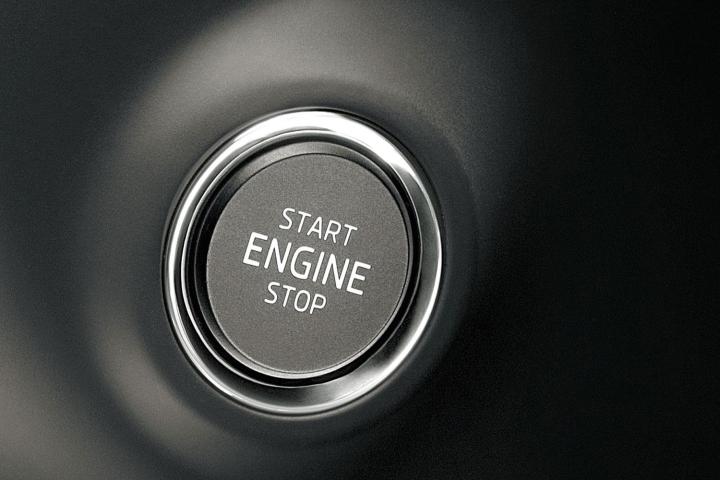
Keyless entry for vehicles made in the new millennium seems like an innovative and convenient godsend for the automobile. In most cars equipped as such, one no longer must fumble for a small, metal tab in order to start a vehicle, thanks to both said keyless entry and the increased popularity of push-start buttons that comes with it.
It seems however that keyless entry has a major issue. A recent New York Times report found that more than two dozen people have died from carbon monoxide poisoning after forgetting to turn off their engines, a result of keyless systems.
More specifically, NYT’s report found that around 28 people in total died from the related issue while a total of 45 others suffered injuries from carbon monoxide exposure. This prompted several safety advocate groups to campaign for new regulations to address the issue.
How might this happen, you may ask? Well, unlike the traditional metal car key, automobiles with keyless entry often consist of a remote fob with a bespoke RFID signal, or radio-frequency identification signal. This allows the fob to act as the master key, only one doesn’t have to physically insert it into a tumbler in order to start a vehicle.
Instead, you just need to have the fob on your person – either in a pocket or purse – in order to access the vehicle. Then, all you have to do is get in and hit the vehicle’s “engine stop-start” button to start the vehicle. And the process is reversed when the vehicle is parked and turned off. Keyless entry first surfaced in the early 2000s.
The issue however is emphasized on what’s being declared a “defect,” where drivers can accidentally leave the car running after being parked. Once the car’s been started, keyless ignition allows the person possessing the master key fob to leave the vehicle with it still running.
Because owners don’t have to twist a key inside a tumbler, and because of how smooth and quiet engines operate these days, drivers are finding themselves more forgetful about turning their vehicle’s engine off. As a result, particularly for those who park their vehicle inside an enclosed space like a personal garage, this can lead to a build-up of carbon monoxide if the garage is attached to the household, poisoning those inside from seepage.
This is a particular issue with gasoline-electric hybrid vehicles, where drivers may think the vehicle is off. But instead, only the engine itself is off while it is running on battery power and the ignition remains “on.”
Back in 2015, a class-action lawsuit highlighted this major issue with keyless ignition following 13 deaths related to carbon monoxide. The lawsuit named Ford Motor Company, General Motors, Fiat-Chrysler Automobiles, Toyota Motor Company, Honda Motor Company, and many others.
At the time, General Motors and Chevrolet responded by recalling 64,000 Volts because they were too quiet, making drivers forget that they were left on while in electric mode. The company amended the issue by updating the affected 2011, 2012, and 2013 Volts to add an idling timeout fail-safe that automatically shuts the vehicle off. Prior to the recall fix, Volts still sounded off a two-time warning tone to alert an exiting driver if the vehicle was left on.
Ford Motor Company also issued a statement in response to the initial lawsuit: “Ford takes the safety of our customers very seriously; the keyless ignition system has proven to be a safe and reliable innovative feature that has been well-received by customers. Ford vehicles equipped with keyless ignition alert drivers when the driver’s door is open and the vehicle’s engine is running.”
The lawsuit also demanded that automakers go back to older model year vehicles that don’t have ignition-on warnings and update them with such warnings, which allegedly can be fixed with an appropriate software update.
A judge dismissed this specific case a year later. But with deaths continuing to mount three years on, the problem continues to grow.
Many new cars also feature warning tones and messages on LCD info displays warning drivers if a car’s ignition was left on. But safety advocate groups are seeking changes at the regulatory level to make these warning signals standard by law, similarly to how the NHTSA mandated that all new vehicles come with rear-facing backup cameras.
To try and get automakers to enact change, the Society of Automotive Engineers, or SAE, began campaigning over seven years ago, asking for automakers to address the issue by standardizing warning signs or signals for engines accidentally left running.
SAE’s campaign garnered the attention of the National Highway Traffic Safety Administration, which later proposed to adopt those changes as a new regulation. However, the idea was met with opposition and is currently in limbo.
Despite the stagnant policy making, some automakers voluntarily elected to equip their vehicles with warning signs or fail-safe contingencies for engines left on in cars with keyless ignitions. For instance, some newer Ford vehicles with keyless ignition automatically turn off their engines after 30 minutes if the key fob is nowhere inside the vehicle.
We’ve reached out to the NHTSA, the SAE, and several automakers for comment and will update this post if there are any responses.
Update: We’ve included a short response from the NHTSA on behalf of the Department of Transportation (DOT).
DOT spokesperson:


